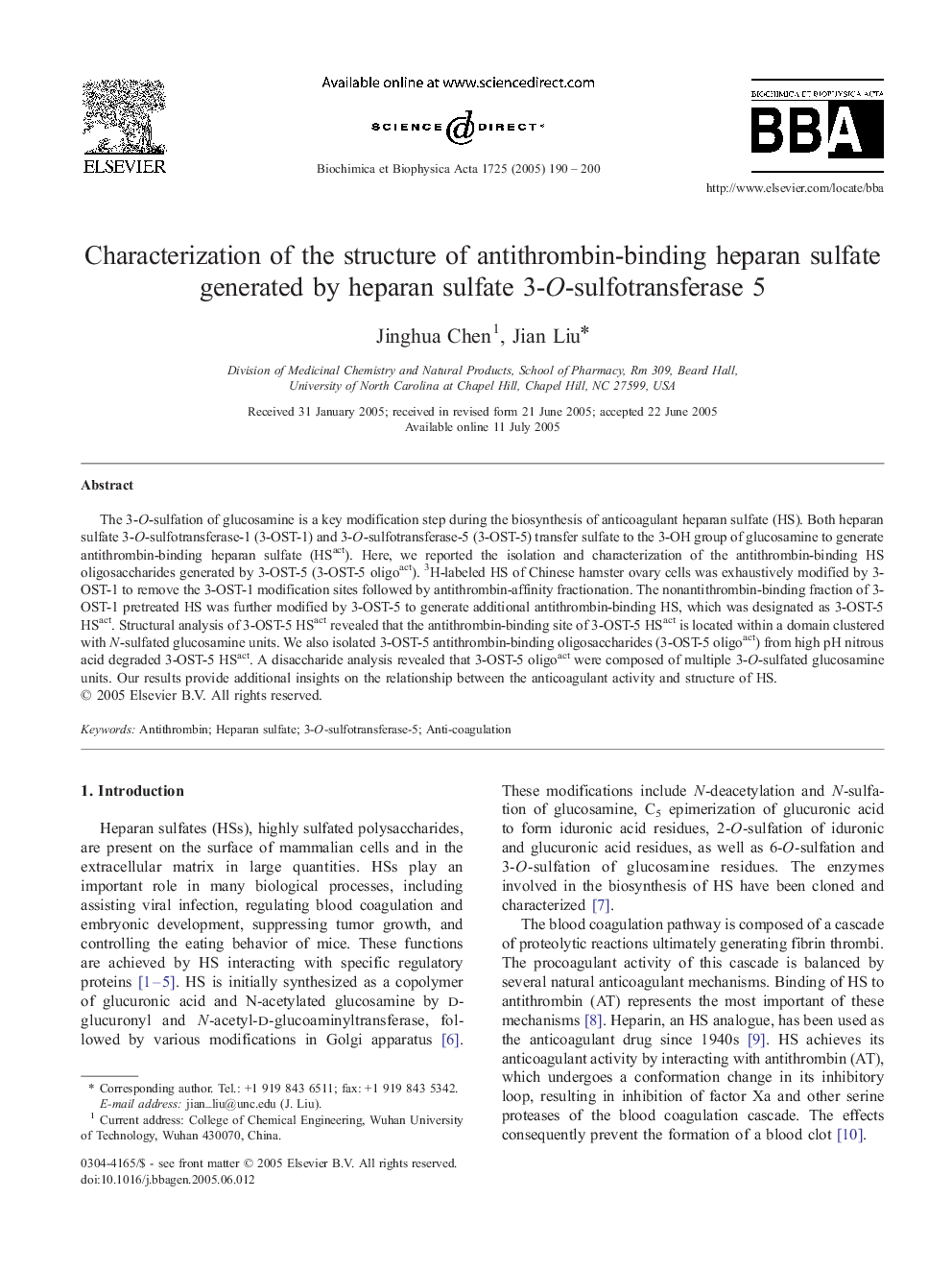| Article ID | Journal | Published Year | Pages | File Type |
|---|---|---|---|---|
| 10801039 | Biochimica et Biophysica Acta (BBA) - General Subjects | 2005 | 11 Pages |
Abstract
The 3-O-sulfation of glucosamine is a key modification step during the biosynthesis of anticoagulant heparan sulfate (HS). Both heparan sulfate 3-O-sulfotransferase -1 (3-OST-1) and 3-O-sulfotransferase-5 (3-OST-5) transfer sulfate to the 3-OH group of glucosamine to generate antithrombin-binding heparan sulfate (HSact). Here, we reported the isolation and characterization of the antithrombin-binding HS oligosaccharides generated by 3-OST-5 (3-OST-5 oligoact). 3H-labeled HS of Chinese hamster ovary cells was exhaustively modified by 3-OST-1 to remove the 3-OST-1 modification sites followed by antithrombin-affinity fractionation. The nonantithrombin-binding fraction of 3-OST-1 pretreated HS was further modified by 3-OST-5 to generate additional antithrombin-binding HS, which was designated as 3-OST-5 HSact. Structural analysis of 3-OST-5 HSact revealed that the antithrombin-binding site of 3-OST-5 HSact is located within a domain clustered with N-sulfated glucosamine units. We also isolated 3-OST-5 antithrombin-binding oligosaccharides (3-OST-5 oligoact) from high pH nitrous acid degraded 3-OST-5 HSact. A disaccharide analysis revealed that 3-OST-5 oligoact were composed of multiple 3-O-sulfated glucosamine units. Our results provide additional insights on the relationship between the anticoagulant activity and structure of HS.
Related Topics
Life Sciences
Biochemistry, Genetics and Molecular Biology
Biochemistry
Authors
Jinghua Chen, Jian Liu,
